Project successes
In 2016, Animalfree Research foundation celebrated its 40th anniversary. During this long history, we have funded a wide variety of projects. Learn about the 10 most promising projects from 40 years of research funding.

The Top 10
To answer the question of whether our 40 years of research funding paid off, we commissioned a Quality Assessment in 2016. This will be updated every 10 years. The 10 most promising projects from 40 years of research funding are the following:
Place 10 for the effort of critically looking into the booming field of GMO. Sadly, the work appears to not have got the attention it might have deserved, revealing quite some deficiencies in this field of research.
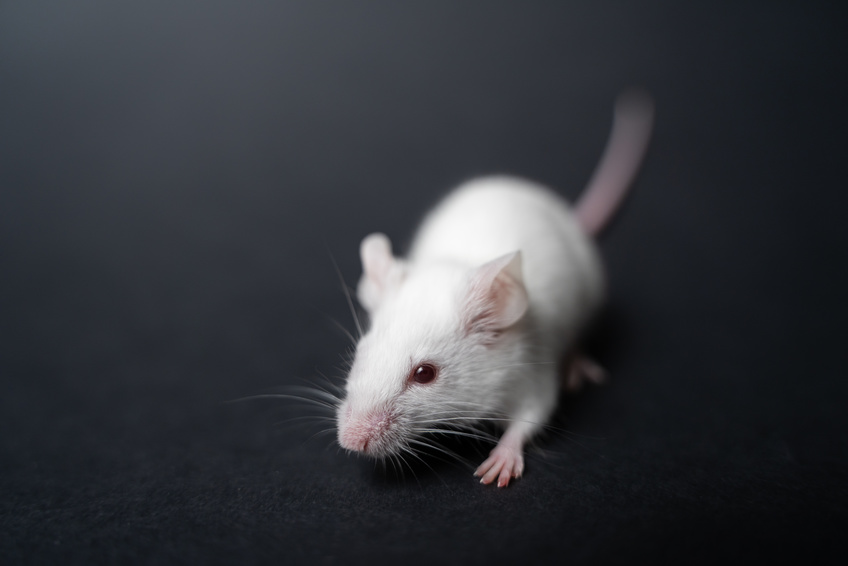
Transgenic animals and hypertension
This literature review examined the benefits of genetically modified organisms (GMOs) in hypertension research within the previous 20 years. Hypertension is a major risk factor for heart disease and stroke.
Why is this project special?
GMO are experiencing a huge hype in research. That is why reviewing conducted experiments to learn from previous results is very important. Therefore, the conclusion of this review is rather surprising and quite a knockdown for the research using GMO in the field of hypertension: none of the publications that they examined contained indications of direct application of results gained by using GMO,whether in humans or animals.
Place 9 for novelty, reduction of burden and the concept of «open access».

Virtual Tox Lab
Starting in 1983, Angelo Vedani (currently Associate Professor at the Department of Pharmaceutical Sciences, University of Basel) received regular financial support by Animalfree Research to create a tool to virtually predict the toxic potential of chemicals and drugs.
Why is this project special?
This project aimed to contribute to two aspects of the 3R philosophy: 1.) To reduce the
numbers of animals used to detect side effects of compounds as well as reducing the physical stress and pain by replacing the most severe experiments with this computer based “in silico” model, and 2.) To create a widely used database which would then reduce the number of otherwise double-conducted tests at research laboratories.
The VirtualToxLab probably didn’t have much of an effect on the number of animals used for toxicological and pharmacological experiments: as it gives out very quick results, scientists use it as an efficient way to screen many more compounds. In the end the most important compounds are still tested in vivo to confirm the safety prediction. Therefore, the most beneficial impact of VirtualToxLab in terms of the 3R objectives has probably been a significant reduction/elimination of in vivo testing of substances with a strong toxicity potential, and thereby achieving a reduction in animal suffering.
8.
Place 8 for a very important first step into development of serum-free cell-medium to help making in vitro methods truly alternative methods without any animals having to suffer.

Serum-free Culture Medium
Animalfree Research funded the study led by Rene Fischer (ETH in Zurich), investigating the possibility of freezing cells using an artificial medium rather than FBS.
Why is this project special?
Replacing a stressful animal experiment in the lab by using an in vitro method which also needs suffering of animals is not the aim for any 3R related changes to science. Investing in an artificial serum-free cell-medium will not only spare the foetuses distress but will also make the experiments more reliable: the exact amount of nutrition’s, enzymes, hormones, etc. are known – which is not the case in natural products and vary from batch to batch – and contaminations with bacteria or viruses can be prevented. The serum-free medium is still used by Fischer and colleagues and it is now also being used widely among other laboratories who adopted the method and no failed attempts to establish the method in other groups were reported.
7.
Place 7 for finding a possible replacement method for a test being used so commonly.
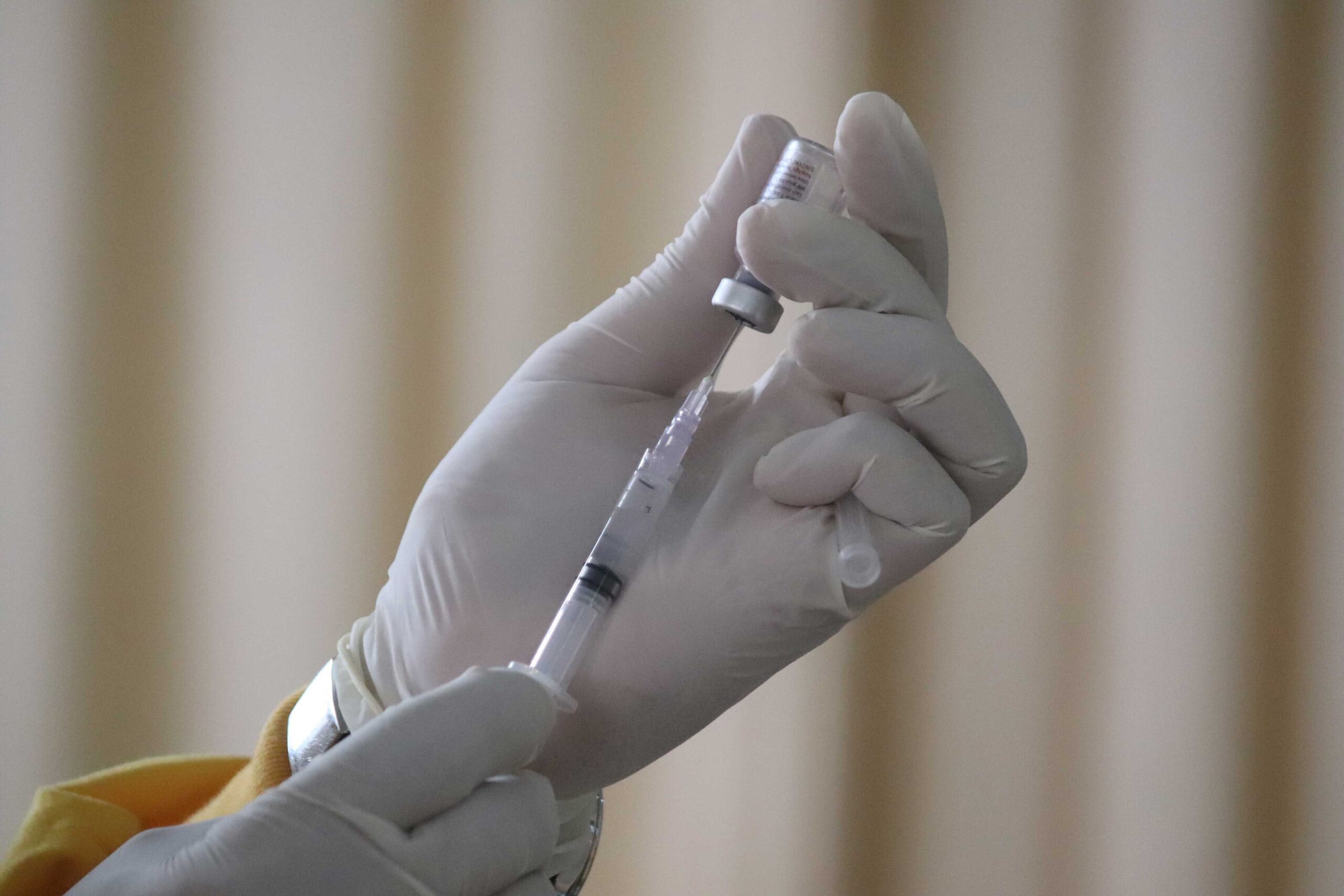
New Method for Screening Tetanus Vaccine Toxicity
In the years 2011 and 2012, Animalfree Research partially financed the optimization of an ex-ante developed test which was believed to be able to discriminate between toxic and nontoxic batches of tetanus.
Why is this project special?
This developed test is believed to be able to discriminate between toxic and nontoxic batches of tetanus toxin- without using any animals. The test is not yet commercially available but further actions for implementing the method are being done.
6.
Place 6 for the innovative approach of using human tissue to resemble epilepsy. This has many advantages for research (actual epileptic brain tissue is used) and for animal welfare in an area of high use of animals. Ranking cannot be higher as the results of this study is yet unknown.

New Model of Epilepsy Using Human Brain Slices
The project of Mark Cunningham at the University of Newcastle aimed to refine the existing human epileptic in vitro model so that it fully captured the profile of electrographic events of the epileptic human electroencephalography (EEG).
Why is this project special?
The project of Cunningham had the goal to refine the existing human epileptic in vitro model by using human brace slices. These are obtained from patients who had parts of their brains removed as epileptic treatment. Finding a model closer to the human disease situation would have a high effect on replacement, reduction and refinement of in vivo models still using brain slices of animals.
5.
Place 5 for development of an in vivo method in an area of high animal use.

ALICE/ VitroCell CLOUD©
Animalfree Research financially contributed to the development of the “Air-Liquid Interface Cell Exposure System”, in short ALICE-CLOUD, in 2009. The aim of the project was to find an easy-to-use, widely applicable method which would reduce the use of animals for the respiratory field of research.
Why is this project special?
The “Air-Liquid Interface Cell Exposure System”, in short ALICE-CLOUD is an in vitro test that uses human lung epithelial cells to test aerosol toxins or compounds. It could be an effective replacement for all these stressful, painful and time-consuming experiments. In 2013 the ALICE-CLOUD had its commercial launching and since a double-digit number of systems had been sold. The FDA is now showing interest in the model which could very much help to make the system more popular. I am sure there is much more to come!
4.
Place 4 for successful game changing research.
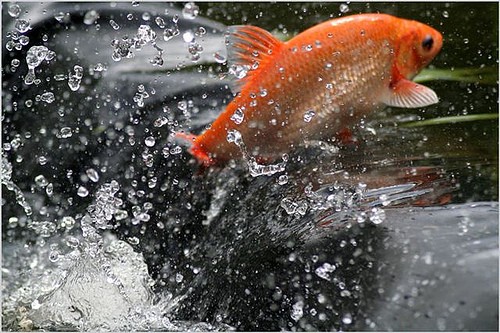
New Fish Cell Line for Ecotoxicological Screening
Up until today industries use the so-called “Golden orfe test” or “fish test” to assess the toxicity of wastewater that is being discharged into public bodies of water. By law, no toxic water may be introduced into the water so the wastewater is first being bypassed into tanks containing orfes.
Why is this project special?
Its objective was to establish a permanent cell line which can be used for toxicological screening of wastewater. Since the 1st of January 2005, it is forbidden to use fish for eco-toxicological experiments in Germany. In Switzerland there are now several approved alternative methods, but fish are still being used. However, since the approval of the alternative methods in 2013, the number of fish has significantly dropped. Today we find a greater variety of established in vitro models, whilst this project probably gave a good impulse to researchers around the world on the importance of finding an alternative. Also, the cell line is commercially available.
3.
Place 3 for the significant changes seen in cosmetic development and law making in the EU.

EpiDerm©
Manfred Liebsch and his group received funding from Animalfree Research in 1996 and 2009 to support their project to develop a new in vitro test for dermal phototoxicity using a model of reconstituted human epidermis called “EpiDerm”.
Why is this project special?
Liebsch et al have developed a new in vitro test for dermal phototoxicity using a model of
reconstituted human skin (epidermis) called “EpiDerm”. This approach obtains cells from human skin which are then cultivated so that this in vitro model does not only imitate the human skin (like rabbit skin does) but does represent it. Since 2007 it is forbidden to sell cosmetics in the EU in which even one single component had been tested in animal. This huge success in animal welfare could only be achieved because valid in vitro models had been developed to replace the painful animal experiments.
The EpiDermTM model is EU-accredited since 2007 and commercially available to scientists and it is probable that this method is being used all over Europe for the development of cosmetic products.
2.
Place 2 for the Pioneerism in creating animal welfare awareness.
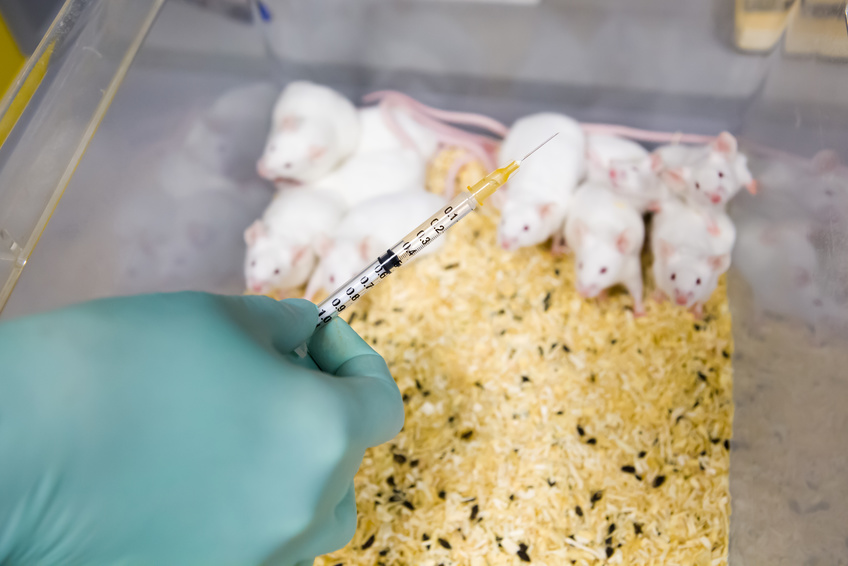
Searching for Replacement of the LD50 Test
The aim of the study was to critically follow up multiple studies that had used the classical “Lethal Dose 50 (LD50)” procedure to recognize the lethal dose of a substance in the field of toxicology.
Why is this project special?
Zbinden and Flury were early pioneers in animal welfare. They encourage discussion about validity of animal models in times when this was not a big issue in science.
Zbinden and Flury then concluded that upon their review certain changes should be made in toxicological guidelines by regulatory agencies. These changes included the prohibition of use of large animals like dogs, monkeys and pigs; a reduction of small animals used and a prohibition of conducting the LD50 test in new born animals.
Even though the classic in vivo LD50 test is still being performed widely in medical research, nowadays it is forbidden to perform this test for the evaluation of cosmetics and other lifestyle products throughout the European Union. Since 2009 it is also forbidden to sell cosmetics which were tested in animal experiments in the EU. In medical research, the number of animals used for LD50-testing is steadily decreasing. Since 2005 three in vitro alternative methods for replacing the in vivo LD50 test received approval.
1.
Place 1 for its long-sightedness, for creating a serious platform for animal welfare in science and for the ongoing efforts to circularize alternative methods worldwide- in open access.
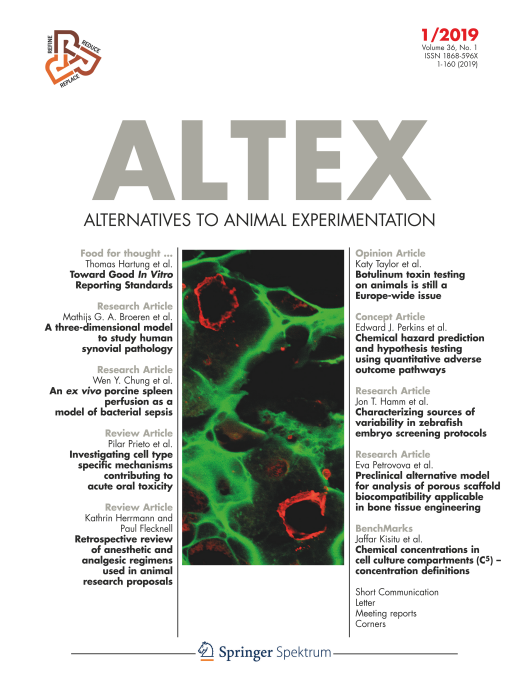
ALTEX (Alternatives to Animal Experiments) Journal
ALTEX started out as a twice-a-year periodical (in German with English abstracts) and, in 2008, developed into a full-fledged English-speaking journal, publishing original articles, short communications, reviews, as well as news and comments and meeting reports.
Why is this project special?
The lack of adequate platforms to publish and distribute alternative methods led to the founding of this Journal. The reason why there was a demand for such a journal is, that the development of new methods designed to replace or reduce live animals is certainly a breakthrough for animal welfare, but not a scientific topic that “classical” journals publish. ALTEX is available as Open Access (“Gold”) and it appears four times a year, with an (steadily increasing) impact factor of 5.824.